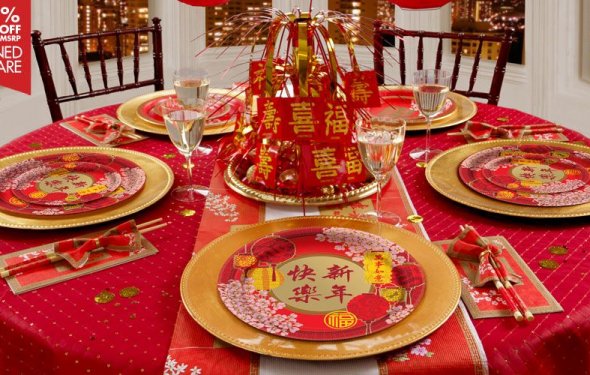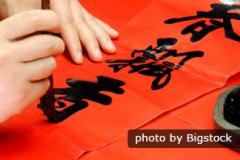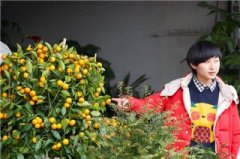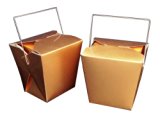Chinese New Year home decorations Ideas

 Chinese do a lot of the decoration the Spring Festival on brand new Year’s Eve, although men and women start to enhance their particular houses around 10 times prior to. Almost all decorations involved colour purple and fortunate photos. 2016 is a-year of this Monkey, so Monkey designs will be.
Chinese do a lot of the decoration the Spring Festival on brand new Year’s Eve, although men and women start to enhance their particular houses around 10 times prior to. Almost all decorations involved colour purple and fortunate photos. 2016 is a-year of this Monkey, so Monkey designs will be.
Kumquat Woods
Buying a kumquat tree at a fresh Year marketIn Cantonese, the kumquat is known as gam gat sue. The phrase gam (金) is the Cantonese term for 'gold', additionally the term gat sounds like the Cantonese term for 'good fortune'.
Similarly in Mandarin, the kumquat is called jinju shu (金桔树 jīnjú shù /jin-jyoo shoo/), as well as the word jin (金) may be the Chinese term for gold. The term ju not just sounds like the Chinese term for 'good chance' (吉 jí /jee/), but also provides the Chinese character if written 桔.
Therefore, having a kumquat tree in the home symbolizes a want both wealth and best of luck. Kumquat woods tend to be an extremely preferred plant presented throughout the Chinese new-year holidays, especially in South China's Cantonese-speaking regions of Hong-Kong, Macau, Guangdong, and Guangxi.
Peonies
The peony is known as becoming "the flower of richness and all the best" in China. So it will be a favorite new-year design.
Flowers and plants tend to be popular in Hong-Kong and Macau as Chinese new-year designs. See Chinese New Year's Eve Flower areas to get more about this.
 Chinese Red Lanterns
Chinese Red Lanterns
Red Lanterns marketed at new-year markets
Chinese lanterns are utilized in crucial celebrations including the springtime Festival (Chinese New Year into the Lantern Festival) as well as the Mid-Autumn Festival. During Chinese new-year it isn't unusual to see lanterns hung on trees in the roads, office structures, and doors of houses. Hanging a red lantern in front of the door is known to-drive down misfortune.
See
Paper Cuttings
Paper cutting may be the art of cutting styles away from report (any shade, but typically red when it comes to Spring event), and then gluing all of them to a contrasting backing or a transparent area (e.g. a window). Its customary for folks in northern and central Asia to paste purple paper cuttings on windows and doors.
The image of an auspicious plant or pet typically offers the motif associated with the New Year's paper-cutting. Each pet or plant presents an alternate wish. Including, the peach symbolizes longevity; the pomegranate, fertility; the mandarin duck, love; the pine tree, endless youth; the peony, honor and wealth; while a magpie perched on the part of a plum tree presages a lucky occasion that shortly take place.
New-year Paintings
New-year Paintings (年画 niánhuà /nyen-hwaa/) are pasted on doorways and walls during New-year for decorative functions so that as symbolic of the latest Year's greetings. Photos from the paintings are auspicious legendary numbers and flowers.
Door Couplets
Composing couplets for Spring FestivalNew-year couplets (对联 duìlián /dway-lyen) tend to be pasted on doors. On the couplets, good desires or statements tend to be expressed. New-year great wishes are usually published in sets (in other words. couplets), as also numbers tend to be associated with good luck and auspiciousness in Chinese tradition. Couplets tend to be brush works of Chinese calligraphy, in black ink on purple report.
The 2 usually-seven-character outlines for the couplet tend to be affixed regarding two sides of an entrance. Lots of people are poems about the arrival of spring. Most are statements by what the residents want or rely on, particularly harmony or prosperity. These might stay up to renewed at next Chinese New Year.
Upside-down 'Chance' Signs
Like new-year couplets, and often as paper cuttings, could be the pasting of big diamonds (squares at 45°) of paper calligraphy because of the inverted Chinese personality 福 (fú /foo/) on or higher doors.
The fu characters are intentionally inverted. fu suggests 'good fortune', and posting the type inverted means they want the 'good fortune' to "pour away" on them. (suitable region of the character was initially a pictogram for a jar. So by upturning the type suggests they are "pouring completely" the container of good lot of money on those coming in the door!)
The Legend for the Upside-Down Fu
This interesting tradition could have result from an innocent mistake...
One Chinese brand new Year’s day (the actual year isn't known today), a family group attached their 福 (fu) inverted as a careless mistake. Regarding first day of Chinese New Year, their very first visitor came to check out, and saw the upside-down 福, and kindly shouted in their mind: "你们的福倒了!" ('Your fu is ugly!').
倒 (dao /daoww/) indicates 'to invert', but in addition implies 'to afin de away'. So "你们的福倒了" could be understood as ‘Your fu (true blessing) was poured out’.
Individuals liked the alternative meaning such that they started repairing their fu accessories upside-down to "invoke" a 'pouring out' of blessings.
To Chinese New Year 2016>|
Chinese Lunar New Year Zodiac Dragon Vigorous Spirit Horoscope Illustration Lover Wonder Design Bathroom Exotic Authentic Decor Design Cool Home Decoration Shower Curtain Orange Red Brown Khaki Home (Ambesonne)
|
|
Yanqiao Gold Wall Decal Dots Easy Peel & Stick And Safe on Walls Paint Removable Vinyl Polka Dot Decor Round Circle Art Glitter Sayings Sticker Large Paper Sheet Set for Nursery Room Home
|
|
Chinese New Year Three Wise Monkeys Eastern Traditional Calendar Horoscopes Funny Chimpanzees Funky Digital Print Polyester Fabric Fun Shower Curtain Coral Yellow Brown Green White Home (Ambesonne)
|
|

|
WeGlow International Chinese Food Decoration Box Gold (5 pieces) Toy (WeGlow International)
|
|
Contemporary Art Zen Giclee Canvas Prints Framed Canvas Wall Art for Home Decor Perfect Wall Decorations For Living Room Bedroom Office - 4 Panel Giclee Art Work Home (Ovansen)
|